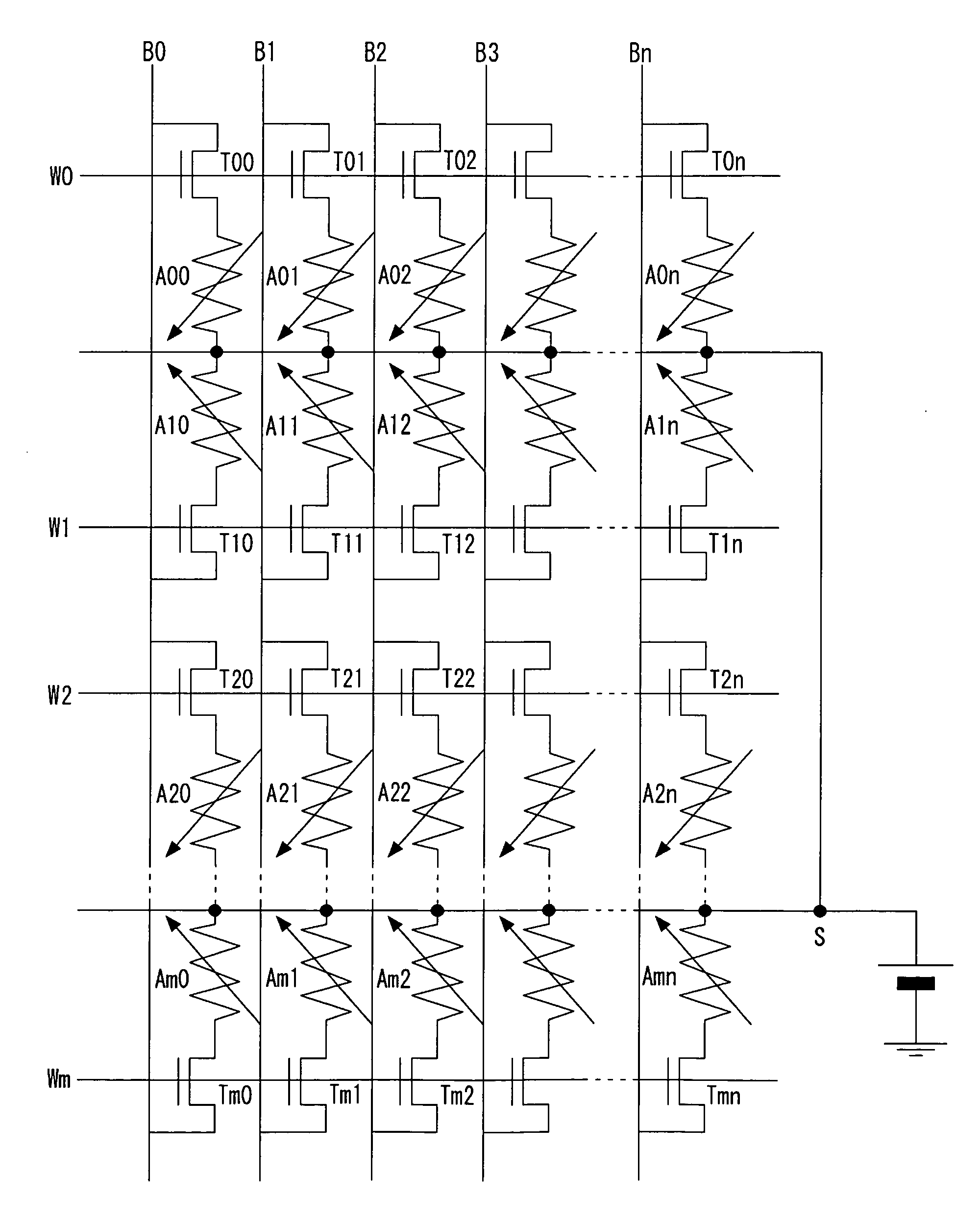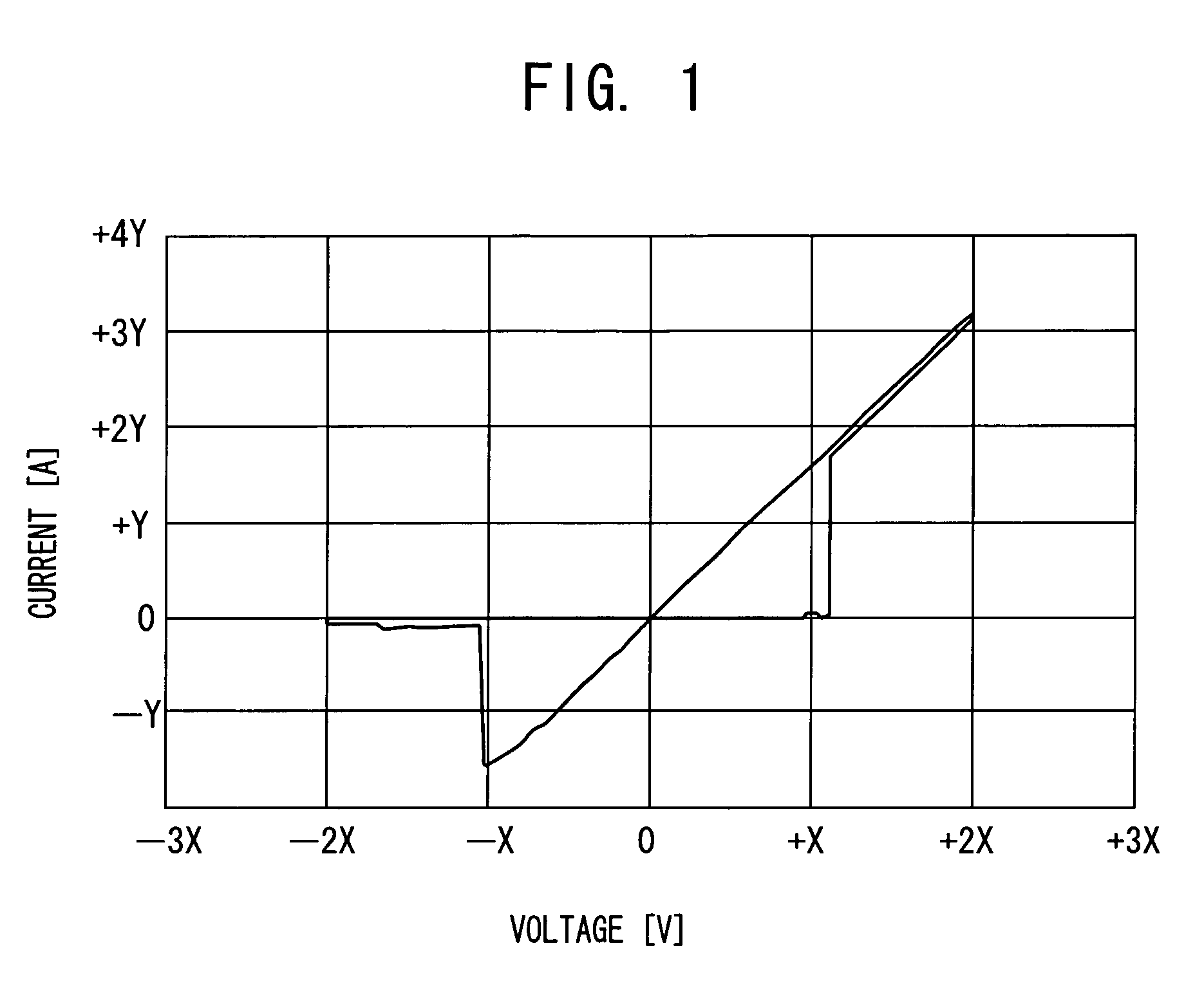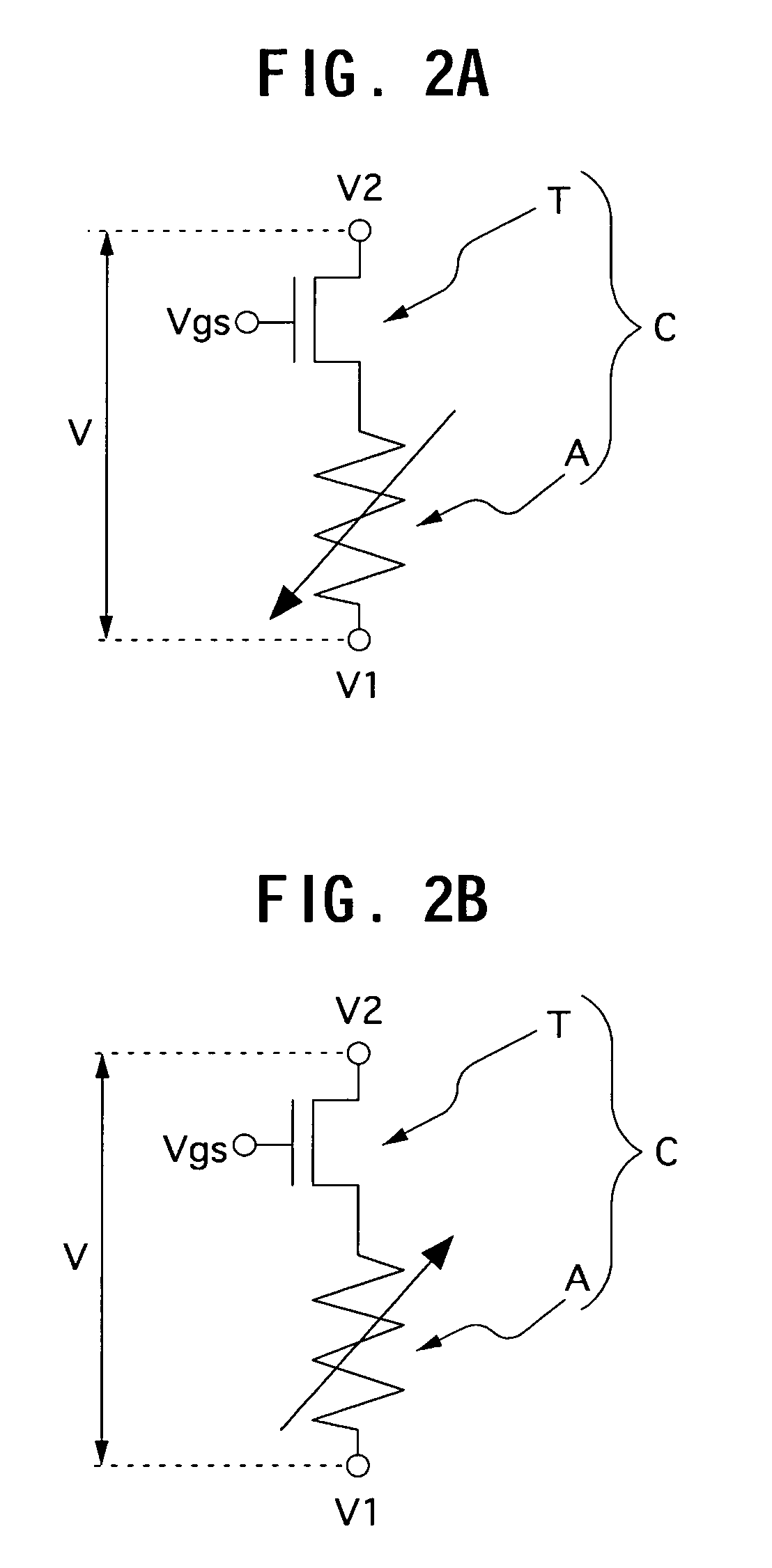Storage apparatus and semiconductor apparatus
a technology of storage apparatus and semiconductor, applied in the direction of static storage, digital storage, instruments, etc., can solve the problems of power consumption, limited number of times of writing, slow reading speed, etc., and achieve the effect of stable recording and shortening the time required for recording
- Summary
- Abstract
- Description
- Claims
- Application Information
AI Technical Summary
Benefits of technology
Problems solved by technology
Method used
Image
Examples
example
[0093]FIG. 8 shows a relationship between the resistance value immediately after writing into the memory element and the potential applied to the common line in a case where a gate potential (potential applied to the word line) of 2.5 V is applied and the potential between the bit line and the source line of 0.5 V is applied in the memory cell in the above-described circuit diagram shown in FIG. 3.
[0094]FIG. 8 indicates that if the potential applied to the common line is 1.4 V or higher, writing is disabled. This is because as the potential applied to the common line is increased, the gate potential of the MOS transistor relatively becomes lower, that is, the on-resistance of the MOS transistor becomes higher, and the resistance value of the memory element immediately after writing become higher, and thus when the potential applied to the common line is 1.4 V or higher, the potential between the bit line and the common line becomes lower than (voltage threshold of MOS transistor)+(w...
PUM
 Login to View More
Login to View More Abstract
Description
Claims
Application Information
 Login to View More
Login to View More - R&D
- Intellectual Property
- Life Sciences
- Materials
- Tech Scout
- Unparalleled Data Quality
- Higher Quality Content
- 60% Fewer Hallucinations
Browse by: Latest US Patents, China's latest patents, Technical Efficacy Thesaurus, Application Domain, Technology Topic, Popular Technical Reports.
© 2025 PatSnap. All rights reserved.Legal|Privacy policy|Modern Slavery Act Transparency Statement|Sitemap|About US| Contact US: help@patsnap.com



